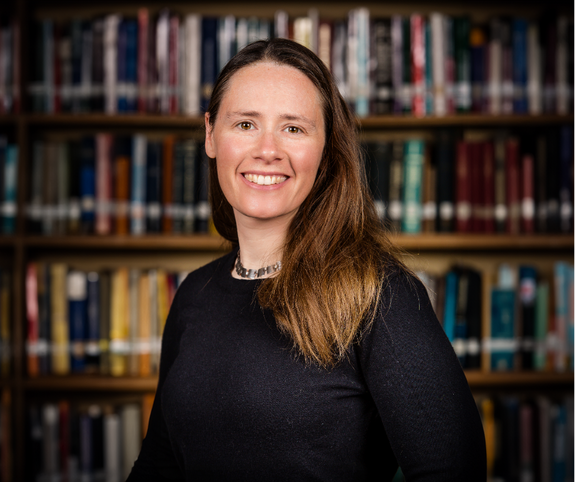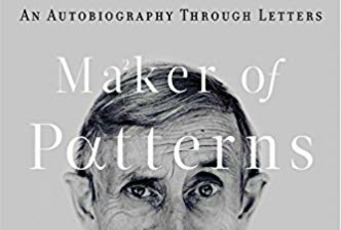Ellen Eischen, von Neumann Fellow in the School of Mathematics, works in the field of number theory, which explores the nature of whole numbers. She employs algebraic, analytic, and geometric approaches to uncover patterns in numerical data that transcend cultures and bridge disparate fields of mathematics. Her work has been elevated through many collaborations, both within and outside of the mathematical community. She joins the Institute from the University of Oregon where she is a Professor of Mathematics.
What is your elevator pitch for describing your research?
Number theory makes it possible for you to transmit data securely, such as when you make a purchase with your credit card. Although this application was discovered only in the 1970s, number theory dates back to the ancient Greeks and Babylonians.

For most of its existence, number theory was thought to have no significant applications! Instead, what motivates my research is a drive to identify and understand striking mathematical patterns that transcend cultures. Number theorists are interested in questions about whole numbers, like how they factor. My research seeks connections between seemingly disparate data arising in areas similar to geometry, algebra, and calculus. That these remarkable connections might exist, as well as hints as to how to find them, is predicted by major work by IAS scholars.
I also enjoy engaging with broader groups on topics related to my research. I organized the Creativity Counts exhibit at the Jordan Schnitzer Museum of Art, and I serve on the Advisory Board of the newly forming Seattle Universal Math Museum. I have also designed workshops to train faculty and students in principles adapted from improvisational theater for engaging with broader audiences.
Have any IAS scholars, past or present, influenced or impacted your research?
YES! IAS scholars have had an enormous impact on my field. IAS scholars have introduced fundamental ideas that influence my research on a nearly daily basis. Many of my collaborators have also been Members at IAS. I suspect that others I will meet this year at IAS will further impact my work.
What’s one unexpected thing you can’t live without as a researcher?
I need walks outside. Most of my ideas come to me on walks. I anticipate many walks in the Institute Woods this year.
Do you have a favorite mantra or motto? If so, what is it?
“Aller anfang ist schwer.” This is German for “Every beginning is hard.” My grandmother, who immigrated to the U.S. from Germany, often said this to me.
When doing research or anything else novel, you are always at a beginning. Even for things you absolutely want to do, beginnings often come with challenges.
IAS has a long history of collaboration across the four schools housed on campus. Tell us about a collaboration that has positively impacted your work.
I have had many fruitful collaborations. One of the most impactful ones was not a research project, though, but rather a museum exhibit that shared a creative side of math with the public. Creativity Counts was on display at the Jordan Schnitzer Museum of Art for three months in 2021, and a virtual version is still available. My experience working with museum staff and others transformed my approaches to communicating not only with the public but also even with experts in my field.

What was your dream job as a child?
I have always had many interests. As a young child, I wanted to be a ballerina-artist-veterinarian-princess. Later, I was interested in engineering and/or another career that used math and creativity. I loved math, and in high school, I even kept a secret math journal where I wrote my ideas about what I now recognize as number theory. Until college, though, I had no inkling one could do mathematical research as a job. I would still love to have as idiosyncratic a combination of careers as I dreamt of as a young child, but the components would now be different and include math.
What changes or evolutions occurring within your field do you find most exciting?
One of most exciting changes concerns the research community. When I was in graduate school, there were few women. Today, the field is rapidly growing more inclusive. In turn, a wider variety of people are contributing to research developments and helping the field advance.
This shift did not happen by chance, but rather through deliberate efforts. For example, a program called Women in Numbers has helped facilitate research collaborations by women. In fact, it led me to a productive collaboration that happens to include several former IAS members. That collaboration led to some of the research I will be working on this year at IAS.



